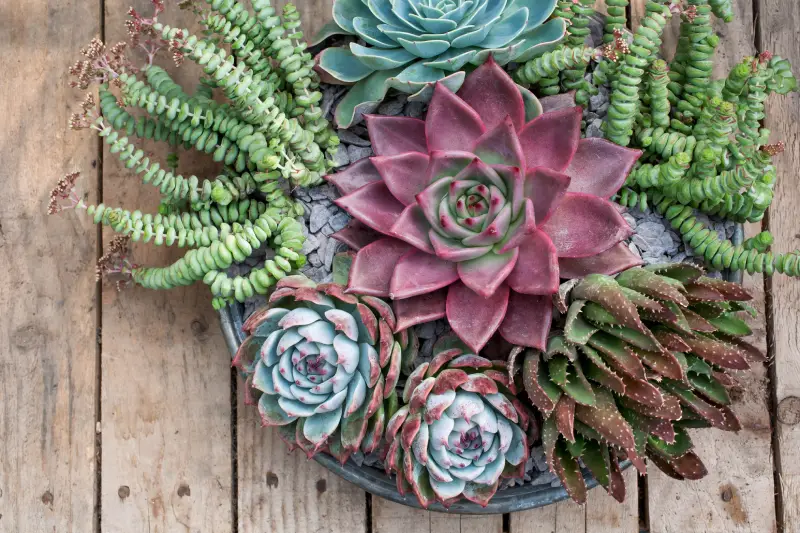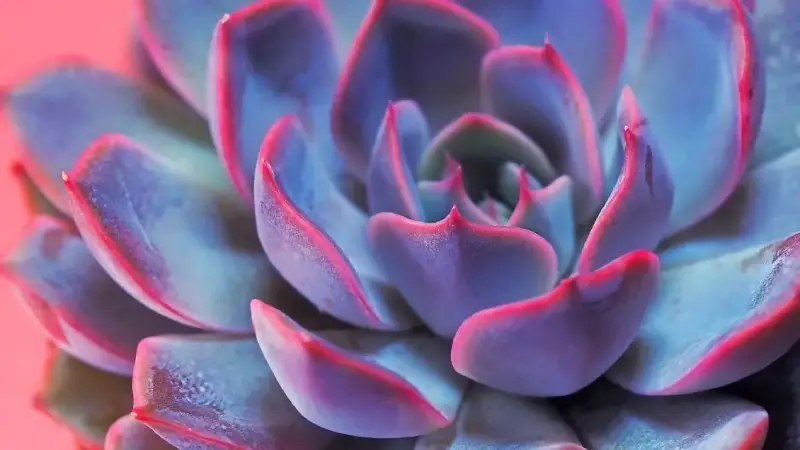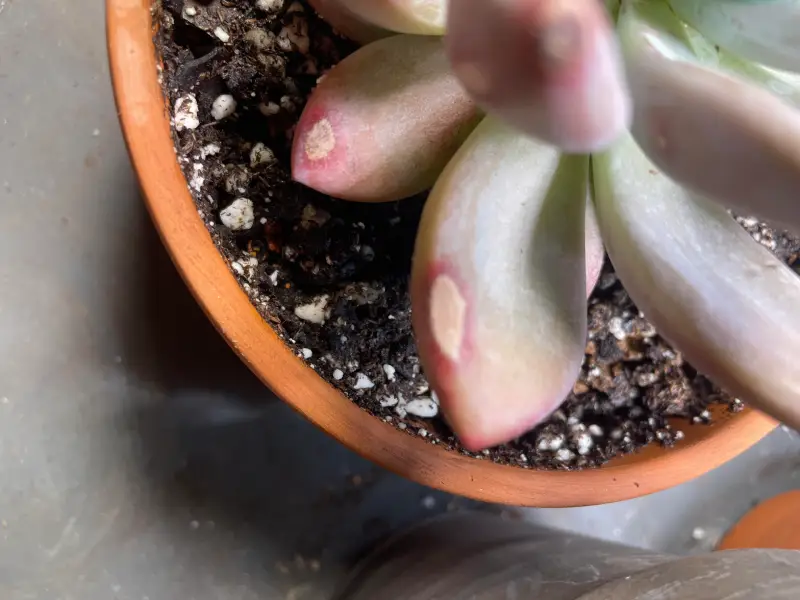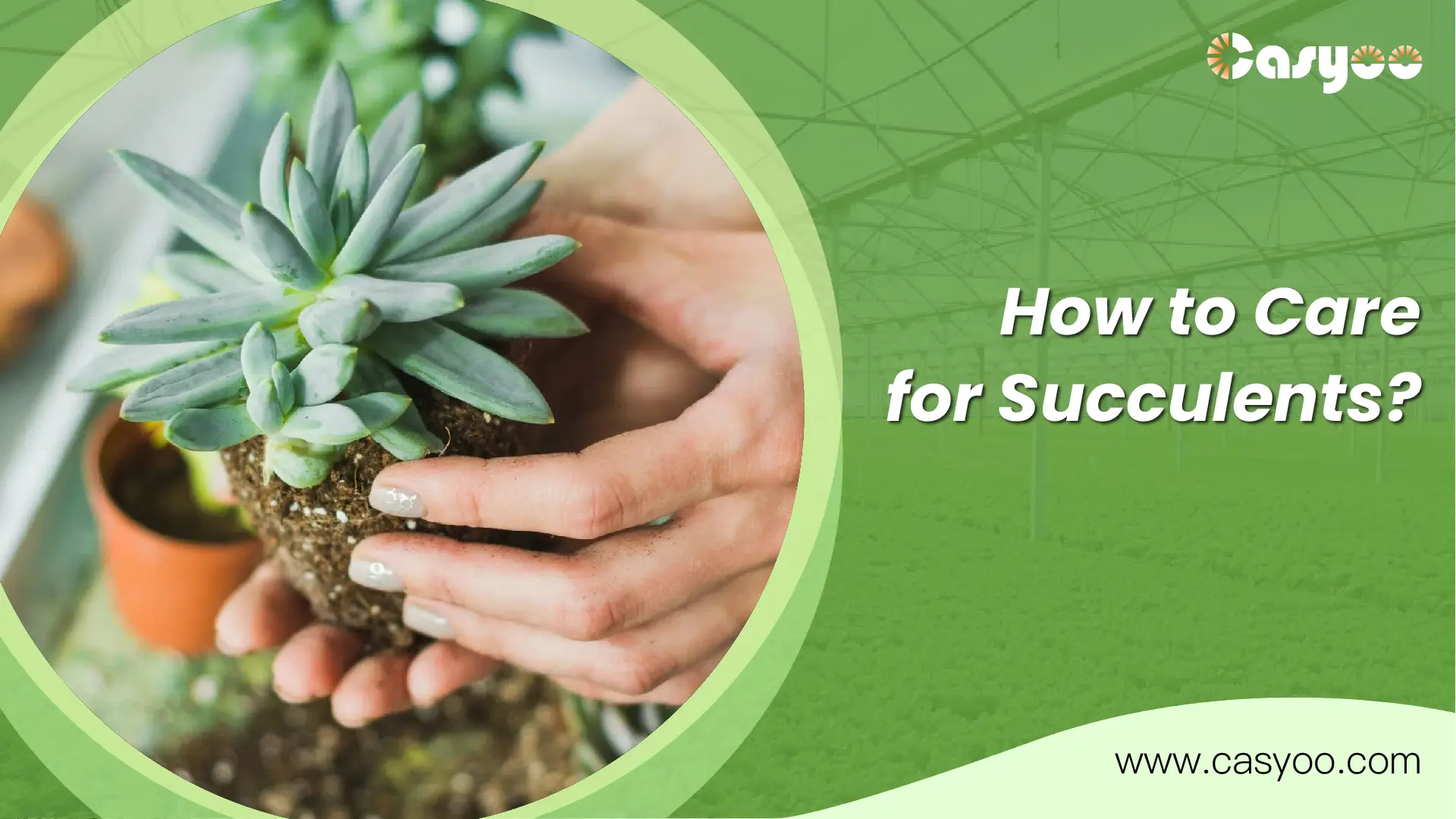Succulents are often considered low-maintenance plants, but even experienced gardeners have seen them die under their care. Read this article to take better care of your succulents.
What are succulents?

Succulents mainly refer to plants that have evolved special water storage tissues, thick leaves, swollen stems, or large tubers. Most of them grow in drought or areas with less rainfall at a certain time. When the roots cannot get water from the soil, they can rely on their succulent fleshy organs to store water to sustain their life.
There are two interpretations of the definition of succulents, broad and narrow. In a broad sense, succulents refer to all plants with thick fleshy stems, leaves, or roots, including all species of Cactaceae, Aizoaceae and some species of more than 50 other families, with a total of more than 10,000 species.
Succulents or succulent flowers in a narrow sense do not include cacti, which are specifically called cactus plants or cactus flowers. The reason for the separation is that they are different in habits and cultivation and reproduction.
Succulents are generally defined in a narrow sense, mainly referring to species with succulent roots, stems and leaves such as the Apricot family, Sedumaceae, Euphorbiaceae, Agave family, Romoaceae, Liliaceae, etc., but not including cactus plants.
5 tips on how to care for succulents

Grow them in containers with drainage holes
Ceramic pots are porous, so it is not a big problem to water them too much. ut ceramic pots become heavy after absorbing water. Generally, purple clay pots are used to grow succulents. The thinner the wall of the purple clay pot, the stronger the air permeability.
Plant succulents in the right soil
Ordinary potting soil often contains too much organic matter to help retain water – good for many plants, but not so good for succulents. You can also mix potting soil, sand, and perlite to grow succulents.
Keep succulents warm in winter
Most light-requiring plants cannot tolerate temperatures below 4 ℃. It is best to maintain a night temperature of 10 ℃ so that the plants do not freeze at night. In late summer and early fall, pay attention to the nighttime temperatures and move them indoors once the nighttime temperatures maintain an average of 5 ℃. Do not leave them outdoors during frost.
Watering
In general, water succulents once a week in the summer, twice a month in spring and autumn, and once a month during winter dormancy. When watering is insufficient, succulents survive on stored moisture. If the soil dries out completely, the root system may dry out and stop growing. When watering is returned, some succulents can regenerate their root system, but it is best to keep the soil as moist as a wrung-out sponge.
Provide enough light
Most succulents grow the best in bright direct light, requiring at least 6 hours of sunlight every day. If you cannot provide enough hours of light, purchasing succulent grow lights is a good choice.
How high do succulent grow lights need to be hung?
The height at which the grow light is hung determines the amount of light the plant receives. Whether you choose LED fixtures or decide to use another type of grow light, you will need to hang them so that they can provide the maximum amount of light to the plants without burning them. I recommend placing the grow lights at least 6 to 8 inches from the succulents at first. After that, you can gradually move them closer so that they get more intense light.
How long do succulent grow lights need to be turned on?
The thing to note when growing indoor plants with grow lights is that you need to figure out what the photoperiod of the plant is because there will be no external sunlight. The photoperiod is used to simulate the day and night conditions of an indoor garden, and you need to understand the photoperiod to grow succulents faster.
The general rule of thumb is that the more light they receive, the faster they grow, and the same is true for succulents. If you are overwintering succulents, it is recommended to put succulents on a 20/4 photoperiod, which means you need to turn the lights on for 20 hours a day, then turn them off for 4 hours, and slowly increase the dark time so that the photoperiod is 16/8. Succulents need to know when it is winter so that they can start the dormancy process. If you use grow lights for your succulents year-round, then during the summer, you can keep them on a 24/0 or 20/4 light cycle so that they can thrive.
How do I know if my succulents are getting enough light?

Signs of Too Much Light
When succulents are stressed by too much light, their rosettes will close up to protect the leaves from strong light. The leaves will turn yellow or brown, usually starting at the outer edges.
Signs of Too Little Light
If their stems will begin to stretch and their leaves will begin to curl( this process is called “yellowing”), you’re sure it’s not because of too much or too little watering. Then this could be due to not having enough light. The problem of the leaves curling downwards can also occur in winter when the temperature drops and there is not enough light indoors.
Why can succulent grow lights effectively prevent and control pests and diseases?
Providing suitable lighting conditions promotes the growth of succulents, enhances the immunity and resistance of succulents, and reduces the occurrence of pests and diseases.
Raising the temperature and reducing the humidity improve the growth environment of succulents, inhibit the growth of fungi and bacteria, and prevent diseases such as gray mold.
Increasing the light intensity and color contrast makes succulents easier to find and observe. And pests such as aphids and flea beetles can be are discovered and removed in time.
Final thoughts
I hope this guide to growing succulents under LED light can help you care for your plants even in the coldest winter. If you want to learn more about LED grow lights, you can visit our website. Casyoo is 24/7 available to help you. Talk to our experts now!




